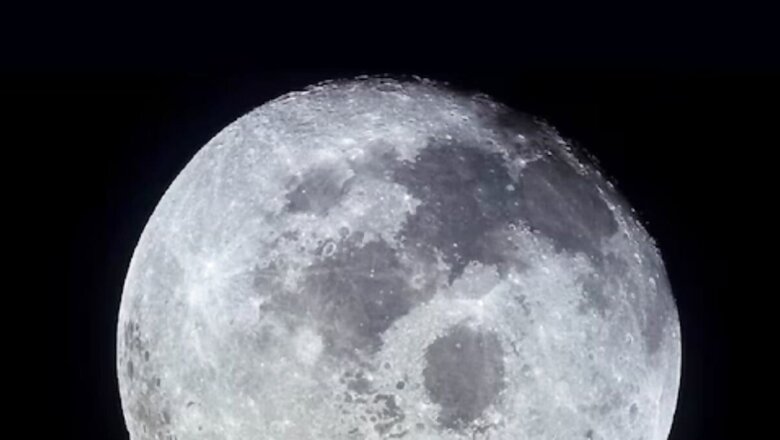
views
Chinese researchers have uncovered an innovative technique for generating large amounts of water on the moon itself. According to reports, Chinese researchers used lunar soil samples brought back during a 2020 space mission. In 2020, China’s Chang’e-5 mission retrieved lunar samples and made history. This was done for the first time in 44 years. Scientists from the Chinese Academy of Sciences discovered that the minerals in these samples, often termed as Moon Soil, are rich in Hydrogen. When this hydrogen reacts with other elements at high temperatures, it creates water vapour. Professor Wang Junqiang at the Ningbo Institute of Materials Technology and Engineering (NIMTE) of the Chinese Academy of Sciences (CAS) led a team along with other scientists in order to carry on with this process.
For this, they were trying for a long time to find ways to make the moon a habitat for human beings, which has the permanent resources necessary for sustaining life. As per reports, this discovery is crucial in designing future lunar research stations and space stations, after three years of rigorous research.
This discovery is significant for China’s long-standing plants to create a permanent presence on the moon, particularly in the continuing competition with the US to exploit lunar resources.
According to reports, using this new technique, one tonne of lunar soil can produce between 51 to 76 kilograms of water. This is roughly equivalent to more than 100 bottles of water, or enough to meet the daily drinking needs of 50 people for the entire day. Scientists producing water using moon soil can break it down electrochemically into hydrogen and oxygen, which can provide both breathable air and a renewable energy source for lunar inhabitants.
China’s purpose is to use this recent and upcoming lunar mission as a foundation for building the International Lunar Research Station (ILRS), a project co-leading with Russia. The Chinese space agency aims to have a basic station on the moon’s south pole by 2035, with a lunar-orbiting space station to follow by 2045.
This innovation rises as Chinese scientists are also evaluating new lunar samples brought back by the Chang’e-6 mission in June.
The significance of finding water on the moon ranges beyond supporting human habitation. NASA administrator Bill Nelson claimed NPR in May that lunar water could be converted into hydrogen rocket fuel, which would be serious for future space exploration missions to Mars and beyond.




















Comments
0 comment